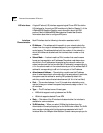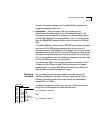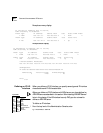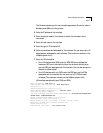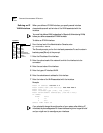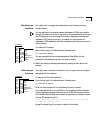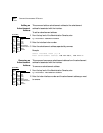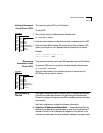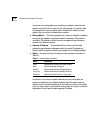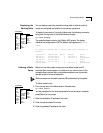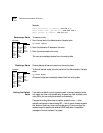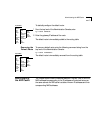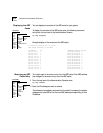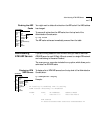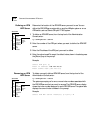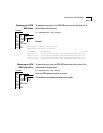
9-10 CHAPTER 9: ADMINISTERING IP ROUTING
more than one routing table entry matching an address, it uses the most
specific route, which is the route with the most bits set in its subnet mask.
For example, the route to a subnet within a destination network is more
specific than the route to the destination network.
■ Routing Metric — This metric specifies the number of networks or subnets
through which a packet must pass to reach its destination. This metric is
included in RIP updates to allow routers to compare routing information
received from different sources.
■ Gateway IP Address — This address tells the router how to forward
packets whose destination addresses match the route’s IP address and
subnet mask. The system forwards such packets to the indicated gateway.
■ Status — For each interface, the route provides the status information in
Table 9-1.
In addition to the routes to specific destinations, the routing table can
contain an additional entry called the default route. The system uses the
default route to forward packets that do not match any other routing table
entry. You might want to use a default route in place of routes to numerous
destinations that all have the same gateway IP address.
Table 9-1 Interface Status Information
Status Description
Direct Route goes to a directly connected network
Static Route was statically configured
Learned Route was learned using indicated protocol
Timing out Route was learned but is partially timed out
Timed out Route has timed out and is no longer valid



